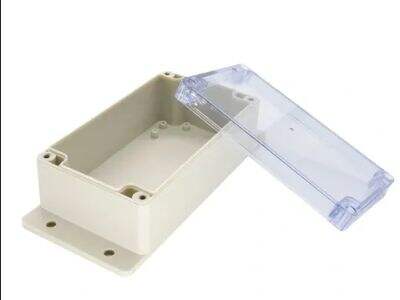The terms panel and enclosure come up a lot when discussing electronics. While these words are used interchangeably, they have different meanings. The next couple paragraphs will shed some more light on how panels are different from enclosures from Hongfa Shunda and what they should be used for.

What is a Panel?
A panel is a flat board commonly made from either plastic or metal. This is an important part of it because that where you put all the buttons, switches, lights and meters. A panel is a simple way to visualize something as broad and abstract as the internet — you can think of it like an artist's canvas. For instance, artists use a canvas, unseen in the painting; wires and components of electronic devices are behind an ornamental panel. This means the panel serves as an organization of those components and lets you interact with them when required.
What is an Enclosure?
In terms of electronics, an enclosure or Plastic Enclosure is a type of box that holds electronic components or equipment. They can be made of metal, plastic and in some cases even wood. A good enclosure protects hi-tech electronics from pernicious things like dust, liquids and anything else that could spoil them. The enclosures are important because they also help to protect the electronics and keep them functioning. Furthermore, enclosures can protect against other electronic devices disrupting the work of the equipment within.
Which One Should You Use?
Choosing between using a panel or an enclosure largely depends on the needs of your project. For small projects that are easy and basic, a panel should be more than adequate. But anything bigger, with more pieces and installing an enclosure or Electronics Enclosure is probably wise. It would be best to consider the particular needs of your project before you can make an informed decision.
Panels and Enclosures are manufactured
How are panels and enclosures made? These panels generally are made of plastic, aluminum or steel. They can be flat or curved, and usually have cut-outs for buttons, dials or displays. This makes the panels versatile for all kinds of applications.
In contrast, enclosures tend to be more sophisticated than panels. They have walls a top and sometimes a bottom Enclosures might even have removable parts, so the material inside can be maintained or fixed more easily. An enclosure can include mounting rails and brackets that are designed to secure all of the components safely. The enclosure may have different thickness and material for each protection, which depends on how much the electronics inside need to be protected.
Comparing in Appearance and Use
Appearance — Panels often look very different from enclosures or Sheet Metal Enclosure. They can be colored or textured to suit the backdrop in which they are intended for. This makes them large, bulky boxes while enclosures are squares or rectangles at best with little aesthetic appeal. So they are functional but cold win no designer prizes.
The enclosures are better than the panels when it comes to functionality as they provide greater protection for other internal components. Enclosures for protection from temperature changes, moisture and other possible risks to electronics. It is even more critical for equipment that may have any outdoor or similarly challenging use, where it could become exposed to the weather.

